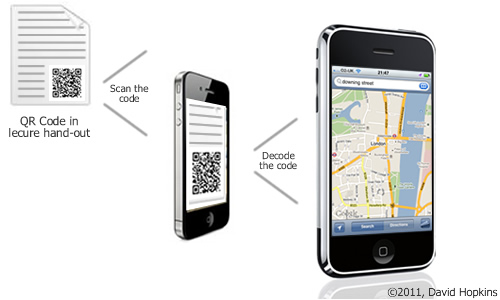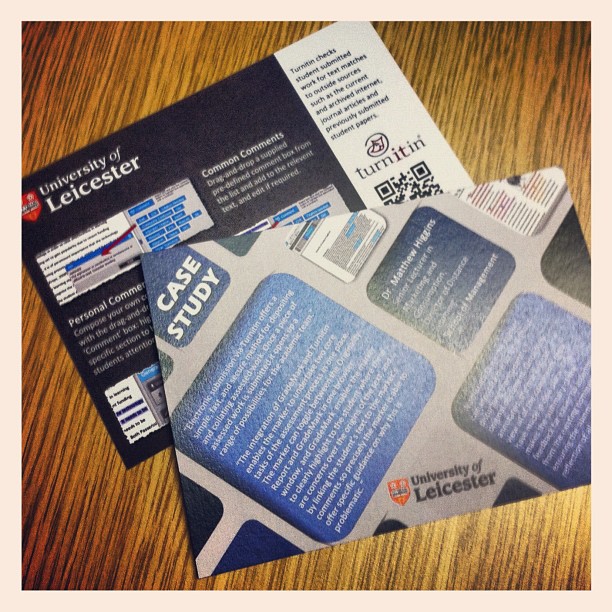CMALT: (5) Specialism
“As well as the core areas, Candidates are required to demonstrate evidence of independent practice in one or more specialist options. This reflects the fact that, although there are common areas of work in this area, practice is extremely diverse and everyone specialises in something different. Your chosen specialist option might be defined by your manager, your professional body or your own personal interests. You can also define your own specialist topics if none of the recommendations here reflect your role and interests. However, when doing this, you should keep in mind that such areas should be specialist – that is, they should not be things that the majority of practitioners in this area would do. Evidence for your specialist activity is likely to be very specific but could include: reports, papers or presentations you have written; a job description plus written statements supporting your specialist knowledge from colleagues, clients or managers; active membership of professional or other bodies; certificates of completion of specialist training programmes or courses.”
5: Specialism: QR Codes

I have chosen to concentrate on my work with QR Codes for two distinct reasons: firstly the posts on my blog are continually being read, tweeted, and discussed, and secondly I was successful (along with a colleague from Bournemouth University, Dr. Milena Bobeva) in obtaining funding from the HEA for a workshop investigating their use in Higher Education (see Supporting Evidence item 1).
For those unfamiliar with the concept of QR Codes there are several explanatory websites and I include a blog post I wrote in February 2010 (see Supporting Evidence item 2). I don’t want to repeat all the possible uses for QR Codes here that I imagined and researched for the project, so I would please direct you to Supporting Evidence item 3 where (and in the section of this post called “what use are they in education?”) I outline the various types of resources/locations the codes could be utilised.
The implementation of QR Codes in the Business School was slow, as is the implementation in my new role at the University of Leicester. Tentative discussions with target academics began the process of targeting the implementation of the codes within resources and learning materials. From here several mini-projects grew where different situations were identified, where the codes could ‘add value’ to the student experience, and where the transmission of ideas, theories, links, or resources could be to the students through the scanning of the codes.
The image below shows (in basic form only) how the codes can be used: the QR Code is placed in the printed material (or on the projector screen, or on a poster presentation, etc) and it is scanned. When the code is created the target is defined (web address, SMS message, etc) and the scanning application will interpret this and show the desired action:

Students were alerted at the beginning of the term that they would need to download and install an ‘app’ (application) to their mobile device that would enable them to scan one of these codes, in preparation to when they needed it. Students were also given a dummy code to scan, to check it worked and they understood what would be required.
The biggest ‘hit’ with both staff and students was the inclusion of a QR Code on the final slide of a presentation, which allowed the students to scan it and get directed to the online resource(s) for that lecture or seminar session from the VLE. While this in itself sounds quite easy, it is not. The trouble with the Institutional VLE (known at Bournemouth University as ‘myBU’) is that is it frame based and therefore does not have unique URLs with which to use. However, files uploaded to the central ‘Content Collection’ area are given unique and lasting URLs which we were able to use to create the QR Codes.
One very important aspect of these scannable codes is that we must remember that not all students have, or have access to, smart phones or camera- and Internet-enabled mobile devices. To this end each QR Code is displayed with a shortened URL that students can take a note of, and enter into their computer browser and retrieve the same link/resource as those who scanned the code – as displayed on the QR Code above (the shortened URL will take you to my list of resources on QR Codes on my blog – see Supporting Evidence item 4).
As the project progressed we realised that we could do more with the codes that just provide ‘links’ to resources or videos for lectures or seminars. Whilst investigating how to make the first year Induction Week more interesting we hit upon the idea to base one of the existing activities around a QR Code hunt. The objective is clear, find all 10 markers/places and take your whole seminar group (10-20 people) to each location and have your photograph taken at the location (proof that the location has been found). Using QR Codes and a Google Map the students were advised that each location had an allocation of points, and the further affield they were willing to go to the furthest locations, the more points the group were awarded.
Since implementing the hunt I have started using the QR Code system Delivr – http://delivr.com – which, as part of it’s statistical analysis, the abilityto capture the geo-location of the scanner. We could incorporate this into the next iteration of the hunt by only giving the students the first code and, when they reach they destination they have to find the next code and scan that. We can then see from the statistical reporting how many scanned the code, and if they scanned it in the location where we placed the code.
The project culminated in a submission to the 2011 Bournemouth University ‘Enhancing Education Conference’ with a poster that outlined our experience with the codes (see Supporting Evidence item 5) and an HEA funded workshop called “Using QR Codes in Higher Education” in January 2012 (see Supporting Evidence item 1). This workshop is;
“… designed to take you on a journey of discovery, tailored to your own QR-experience. It is suitable for both people who are new to the QR-concept and those who have substantial experience and would like to build a network to extend the use of QR Codes in education through collaboration in joint projects.”
I continue to implement QR Codes on resources I create at the University of Leicester. I started with a series of postcards supporting workshops and training resources for Turnitin and GradeMark (see Supporting Evidence item 6) and have other postcards and posters in design stages to further their use and widen coverage and understanding of what they are, how they can be used, and the benefits involved in linking the paper/offline world to the online/digital.

In May 2013 I completed a 14,000 word Book called ‘QR Codes in Education’ (see Supporting Evidence item 7) and made it available through online stores such as Amazon, Kobo, Smashwords, and iTunes. As well as being an exercise in writing and reflection this experience has also enabled me to gain a fuller understanding of the world of self-publishing which I will continue to explore.

Supporting Evidence:
- Workshop: “Using QR Codes in Higher Education”
- QR Codes: What are they?
- QR Codes: The nuts and bolts
- QR Codes (Resources)
- QR Codes in Education: the Business School Experience
- Turnitin and GradeMark Support Materials (University of Leicester)
- Book: QR Codes in Education
Portfolio pages:
- 1A. An understanding of the constraints and benefits of different technology
- 1B. Technical knowledge and ability in the use of learning technology
- 1C. Supporting the deployment of learning technologies
- 2A. An understanding of teaching, learning and/or assessment processes
- 2B. An understanding of your target learners
- 3A. Wider context
- 4A. Communications
- 5. Specialism
- 6. Future plans
- 2017: Review


















